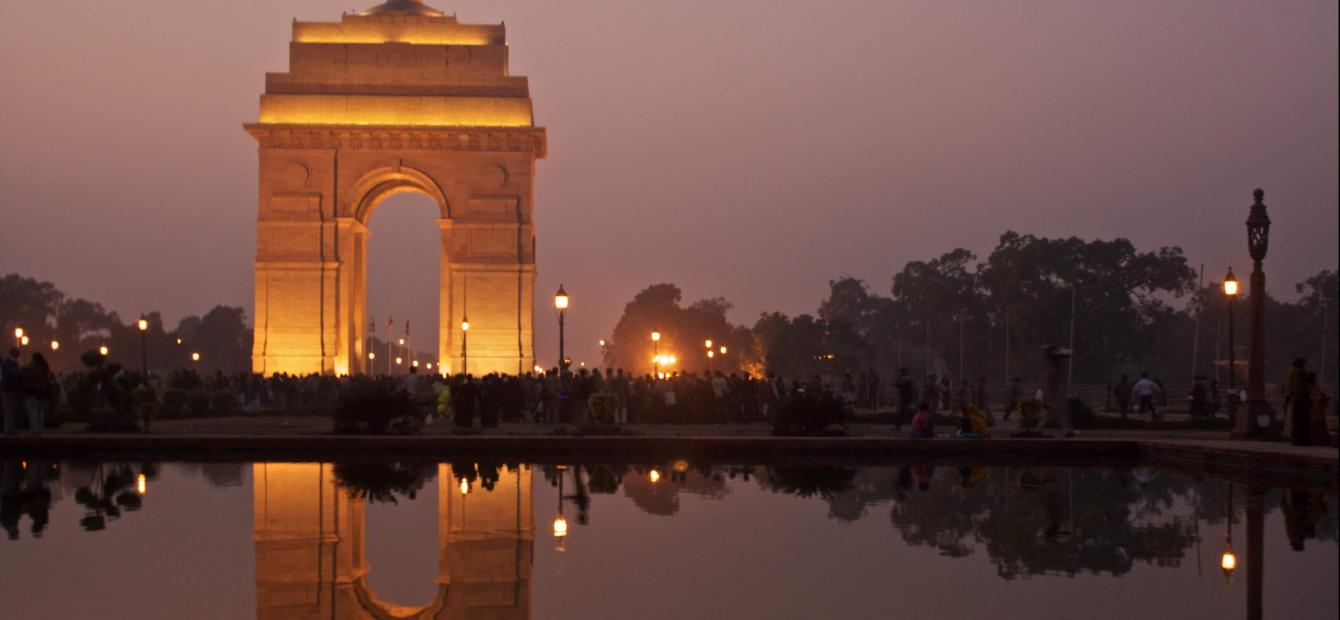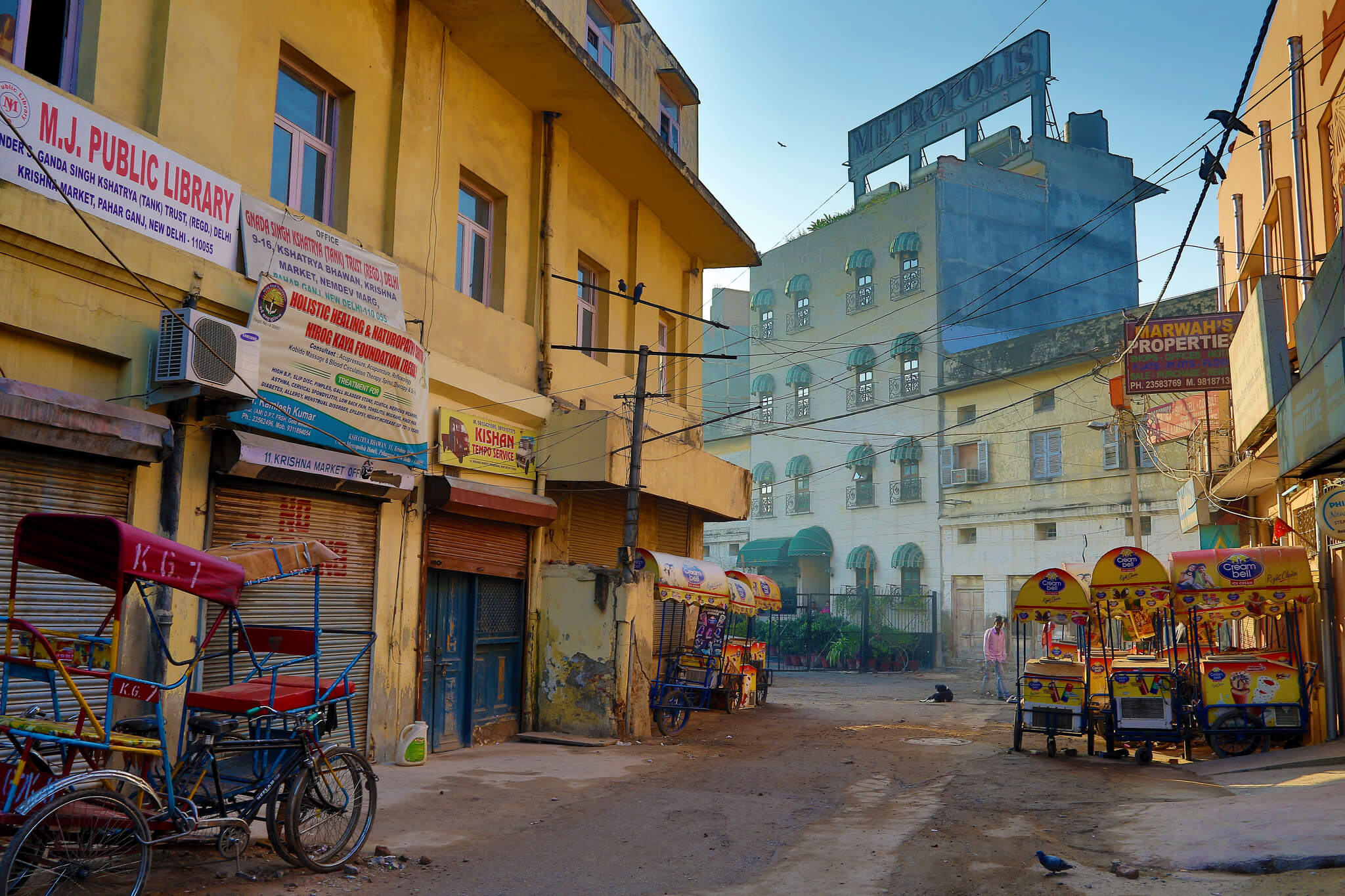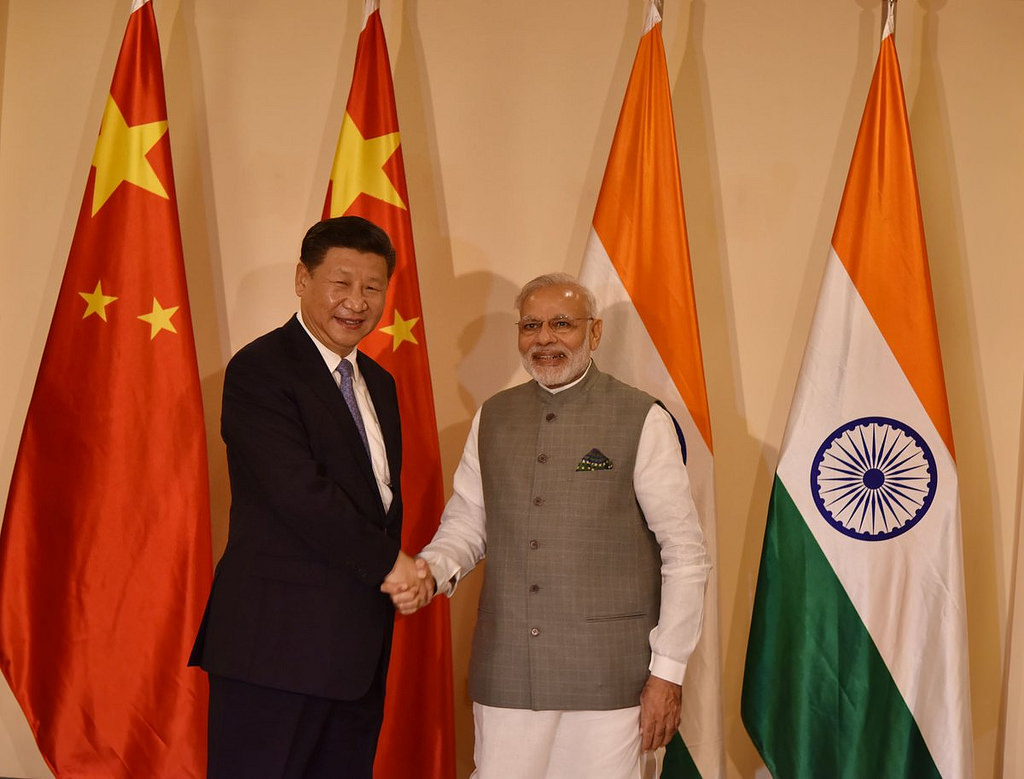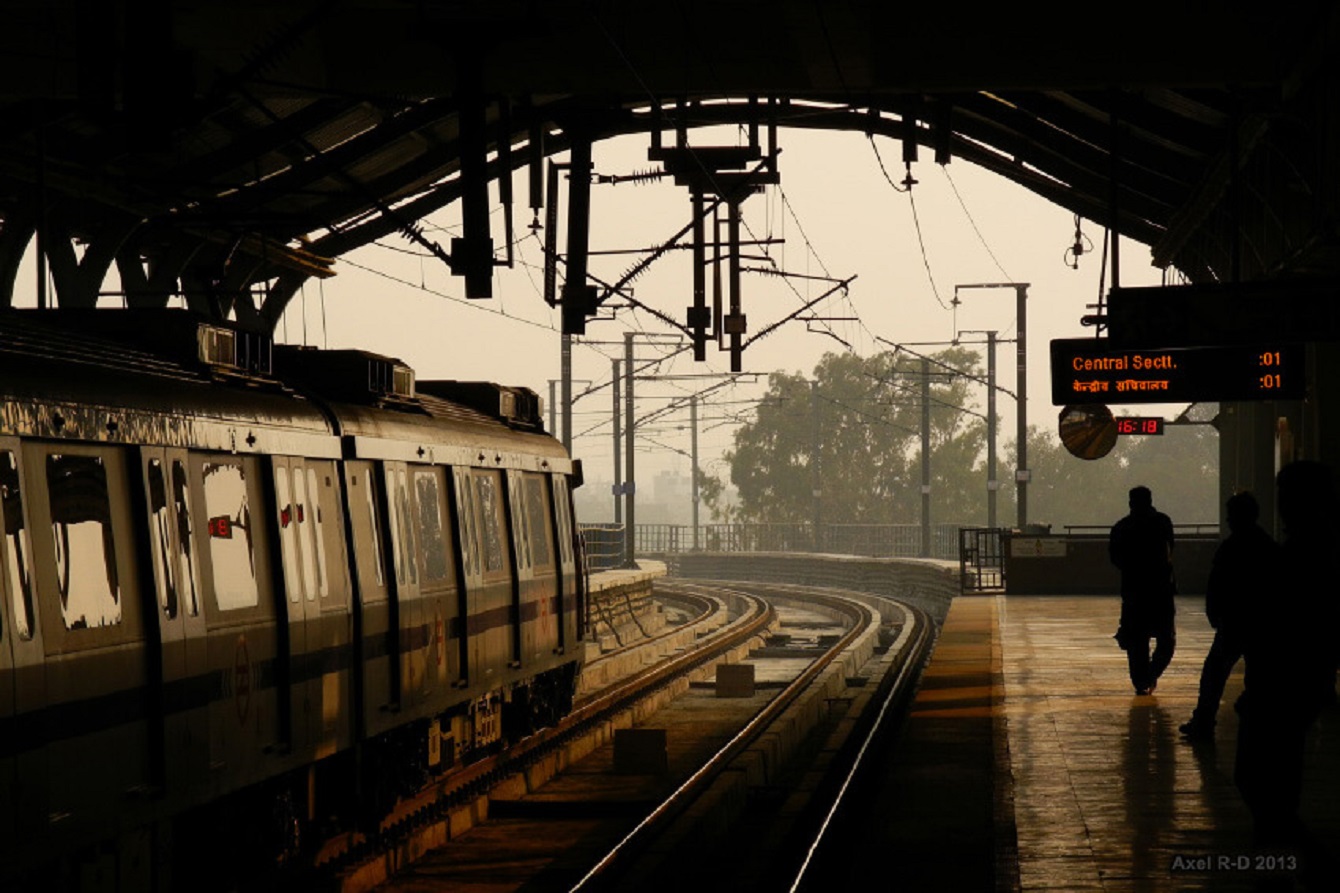
Rise of China requires a balancing act for India
India is facing a major shift in power dynamics with the rise of China that adds impetus to its pursuit of constructive relations with the US and America’s Asian allies. India stands to benefit from being more assertive.
In a significant shift in Indian foreign policy, Foreign Secretary Vijay Gokhale asserted during the 2019 Raisina Dialogue, a multilateral conference in New Delhi, that “India has moved on from its non-aligned past. India is today an aligned state — but based on issues.” Underscoring that it is time India becomes part of the rule-making process, Gokhale argued that “in the rules-based order, India would have a stronger position in multilateral institutions.” The Foreign Secretary was categorical that India’s future would be largely shaped by the kind of role New Delhi manages to play in the G-20 and the Indo-Pacific, signalling clearly the changing priorities of Indian foreign policy establishment.
The reason Gokhale’s assertions did not raise many eyebrows is that for the last five years, the Modi government has gradually, but decisively, shifted the discourse on Indian foreign policy without many in the Indian strategic community even recognising this shift. Critics of the government have continued to be sceptical about anything substantive changing even as the Modi government has continued to redefine Indian foreign policy priorities – both in substance and style.
While delivering the Fullerton lecture at the International Institute for Strategic Studies on ‘India, the United States and China’ in 2015, Gokhale’s predecessor, then Foreign Secretary Jaishankar, had suggested that today’s India “aspire[s] to be a leading power, rather than just a balancing power” and as a consequence, it was willing “to shoulder greater global responsibilities.” He, of course, was taking his cue from Prime Minister Narendra Modi himself who, soon after taking office, had challenged his senior diplomats “to help India position itself in a leading role, rather than [as] just a balancing force, globally.”

In the last five years Modi has sought to transform India from being merely an important player in the global order into one which is able and willing to define the priorities of the international system. He has been unabashed in shedding any diffidence surrounding India’s great power aspirations and in so doing he has been underscoring the confidence of an aspirational society that is willing to reassert its civilizational soft power.
This has resulted in a hyper-energetic diplomacy which not only seeks an ever greater global footprint but also places emphasis on the nation’s soft power attributes like yoga, spiritualism and the diaspora. This transition is not merely an expression of the nation’s greater self-assurance but also driven by an ambition to be a rule-maker, not merely a rule-taker. It has imbued Indian foreign policy with a certain amount of risk-taking unlike the risk aversion of the past. India, from perpetually being a cautious power, is seemingly ready to take on a larger global role by being more nimble than ever in playing the great power game.
Explicit shift from Nehru’s legacy
In a revealing statement, former Foreign Secretary Jaishankar’s candid take on American presence in the region was a testament to greater realism creeping in Indian foreign policy discourse. He had suggested that “from an Indian perspective today, for us the fact that the US is both a source of supply and a military partner helps to create enough uncertainties that could actually strengthen security in Indo-Pacific region.” As the balance of power in the Indo-Pacific undergoes a dramatic shift, New Delhi’s assessment of this balance will be key in preserving its equities in this flux. The Modi government is redefining strategic autonomy as an objective that is attainable through strengthened partnerships rather than the avoidance of partnerships. By doing so, it seems to be underlining that in today’s complicated global scene, strategic autonomy and non-alignment are not necessarily a package deal.
Modi’s explicit shift away from the legacy of former Prime Minister Nehru is a significant departure from the traditional foreign policy approach of New Delhi. Indian policymakers’ fixation with non-alignment has remained a central component of Indian identity in global politics that is manifest in continuities: since independence in 1947, India has been in pursuit of strategic autonomy, a quest that in practice has led to semi-alliances fashioned under the cover of non-alignment and shaped by regional dynamics. In this setting, the rise of China now raises an interesting conundrum for Indian policymakers as New Delhi seeks to balance the benefits and risks of an increasingly assertive neighbour and a network of alliances with like-minded countries.
The decision to adopt non-alignment was not merely an idealistic dream of neutrality, but was, rather, based on a realistic assessment of India’s geopolitical situation. Nehru intended to give India room to manoeuvre according to its own interests rather than allowing it to become confined within the limitations of a Cold War alliance. Hindsight reveals the consequences of this approach. Although providing the benefits of flexibility, non-alignment gave way to an inward-looking foreign policy that gave real credence only to Pakistan as a threat.
Finding an effective grand strategy inevitably requires a balancing act. Non-alignment has been India’s answer to this challenge and an influential tenet of its foreign and security policy since its emergence from colonization. This approach has in the past enabled India to avoid many of the limitations and entanglements of formal alliances; but it has also left the country in the position of shaping policy in a reactive manner.

India is now at a crossroads. China’s rise and assertiveness as a regional and global power and the simultaneous rise of middle powers in the region mean that this balancing act is increasing in both complexity and importance simultaneously. China’s growth presents great opportunities for positive engagement, but territorial disputes and a forward policy in the region raise concerns for New Delhi, particularly in the Indian Ocean and with Pakistan. The region itself is riddled with rivalries; a desire to balance China may push states together, while other issues divide them. The same applies on the global level as well, as noted by the unpredictability in China-US relations.
Indian policymakers have continued to place emphasis on strategic autonomy, a relic of non-alignment, as a means of mitigating the potential costs of a strategic partnership with the US. This balancing act is evident in relations with China: despite interest in cooperation with the US, India stands to benefit from an economic partnership with China and wishes to avoid antagonising its more powerful neighbour by serving as the lynchpin of the US pivot to Asia, which the Chinese broadly perceive as a measure of containment. There is also lingering concern over US reliability, not only owing to its relationship with Pakistan but also because of its vulnerability to China during the financial crisis of 2008–09. Likewise, India has balanced its still strong defence relationship with Russia against its interests in cooperation with the US. New Delhi has sided with Russia, China and Iran in avoiding interference in Syria’s civil war and, despite voicing concern over the spread of the Islamic State network, has continued to promote a Syrian-led process of institution-building. Finally, there is a general concern in India that the country’s capabilities in the event of a conflict with Pakistan may be limited by over-reliance on the US, which continues to extend defence aid to Pakistan despite a drop after 2011.
India: a regional power-broker?
Despite this hesitancy, India is facing a major shift in power dynamics with the rise of China that adds impetus to its pursuit of constructive relations with the US and America’s Asian allies. India stands to benefit from being more assertive. Already, cooperation with regional players is boosting its economy and defence capabilities, and as a pillar of the US pivot to Asia, India is finding support for an increased role as a regional power-broker. These growing partnerships do not need to bar engagement with China. Moreover, assertiveness in regional and global relations may actually carve out more room for India to pursue the strategic autonomy it values.
After engaging Chinese President Xi Jinping in Wuhan, Prime Minister Narendra Modi went to Sochi last year to meet Russian President Vladimir Putin, devoid of the baggage of formalities and unencumbered by the expectations to produce breakthrough agreements. These were attempts to give a boost to two important bilateral ties which were sagging under the weight of bilateral contradictions and global trends. Where in China Modi sought to remove the cloud of Doklam (where the standoff between China and India in 2017 took place) from the relationship, in Russia he tried to reaffirm New Delhi’s commitment to galvanize one of India’s oldest strategic partnerships.
What is of significance behind these summits is the role of US President Donald Trump and his disruptive approach to international affairs. His ham-handed handling of global diplomacy has once again brought the world back to early 1990s when the threat of American unipolarity drove countries like Russia, China and India towards collective action. The idea of a Russia-India-China axis was born out of such an environment where the three countries started coordinating their actions on issues of global governance. Today, once again, the three nations have begun to explore similar collaboration, though motivations are different.
The idea that India and China share convergent interests on the global stage and so need to work together is not new. Throughout the early 1990s, it was this idea on which the broader India-China partnership was predicated upon. In fact, the Russia-India-China trilateral arrangement and the BRICS (Brazil, Russia, India, China and South Africa) platform evolved out of this synergy. India and China spoke in one voice against western interventionist policies in the 1990s and stood up against the West in global trade and climate change negotiations. This engagement has been weakening recently partly because Beijing seemed keener on reaching bilateral understanding with major western powers without taking New Delhi into account.
If today China is once again talking about working together with India on global economic issues, there seems to be a realisation in Beijing that western opinion is turning against it rather rapidly. China would need partners which can help it alleviate some of these challenges. Its traditional partner of choice, Russia, won’t be of much help as it is not fully integrated into the global economic order and has also burned its bridges with the West. India, meanwhile, remains an emerging economic power — both with the heft and credibility — to shape the global economic architecture, in partnership with the West.

China has been using the BRICS platform to rally India and others to support economic globalisation and multilateralism and make a stand against Donald Trump’s protectionist tendencies even as bilaterally, it has been seeking greater cooperation from India. Given India’s high stakes in the globalised economic order, New Delhi has also offered this support. India’s membership of the BRICS allows New Delhi to have conversations with other four members on issues of global governance in an age of disruption being shaped by the Trump Administration.
The challenges ahead
The challenge for India is to once again use its convergence with Russia and China on global issues to bring a semblance of balance to American capriciousness on the global stage. New Delhi has engaged Trump administration at multiple levels to give it a sense of Indian sensitivities and priorities. But in order to hedge against a Washington which is hell-bent on disrupting the “rules of the game”, most of them laid down by the US itself, it is imperative for India to engage with Russia and China. Unlike the India of the 1990s, the India of today is much better placed to set the terms of these engagements.
India’s rising global profile is reshaping New Delhi’s approach to its major partnerships in the changing global order. Though sections of the Indian establishment still want to reinvent non-alignment under ever new guises, New Delhi is showing signs of pursuing strategic autonomy separately from non-alignment under Modi. This separation is overdue in India’s foreign policy, and the country stands to benefit from leveraging partnerships rather than shunning them. Under the Modi government, India is charting new territory in its foreign policy, predicated on the belief that, rather than proclaiming non-alignment as an end in itself, India needs deeper engagement with its friends and partners if it is to develop leverage in its dealings with its adversaries and competitors. India is today well positioned to define its bilateral relationships on its own terms without ideological crutches.
The sheer audacity with which Modi has challenged the foreign policy shibboleths of the past is striking. The non-alignment ideologues in India stand confounded. For years, the nation has been told that the only way the foreign policy establishment can secure Indian interests is by working within the rubric of non-alignment. As India conceives of a new role for itself in global politics, the critical issue remains one of state capacity which subsequent governments will continue to grapple with. But there should be no doubt that Indian foreign policy has shifted the goal posts in the last five years – both in style and substance.











1 Reacties
Load comments
Great Merchant
China now is one of the richest country in the world it is because since before they are good merchants. https://www.panamacitypainters.org/
Reactie toevoegen